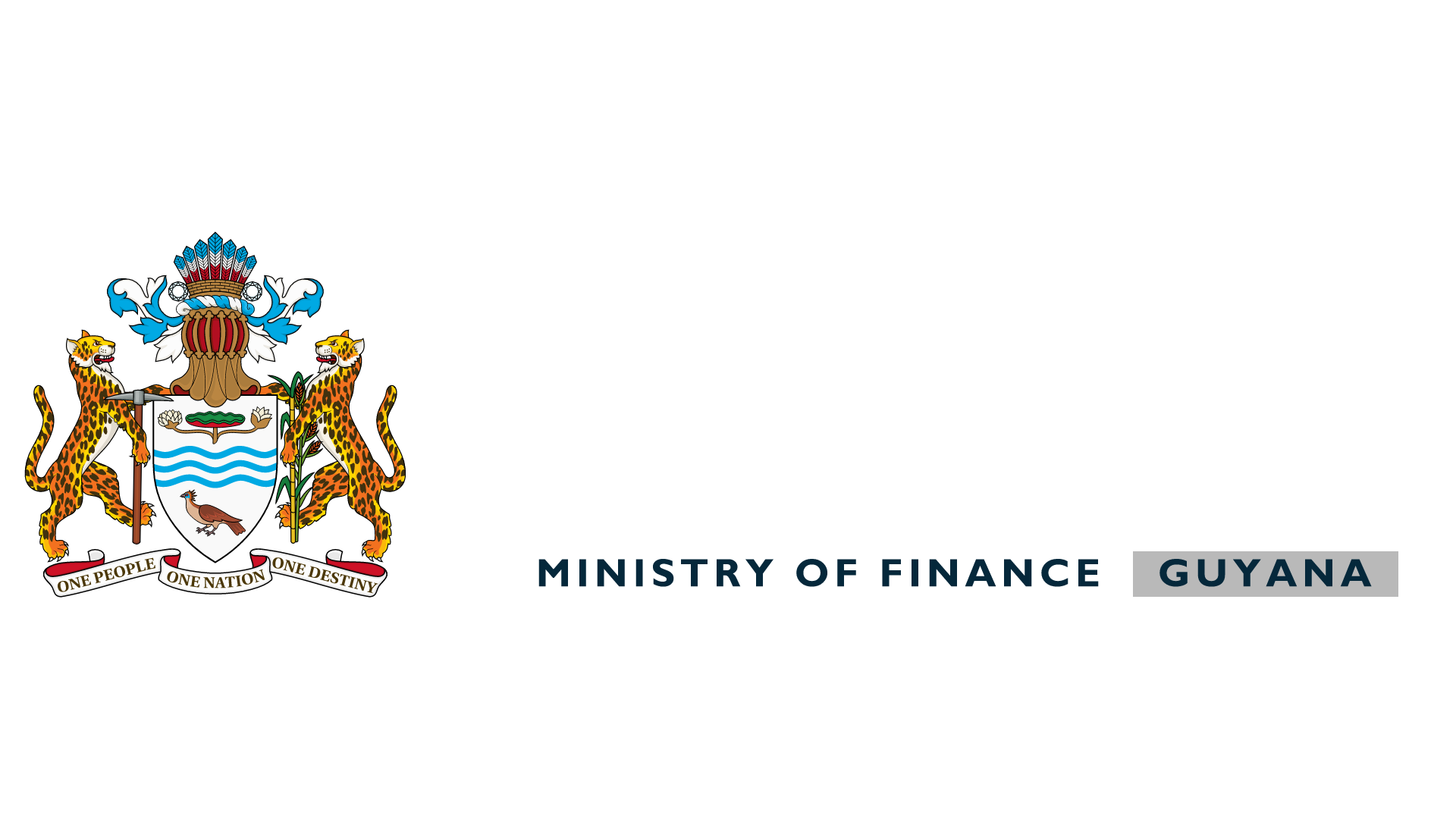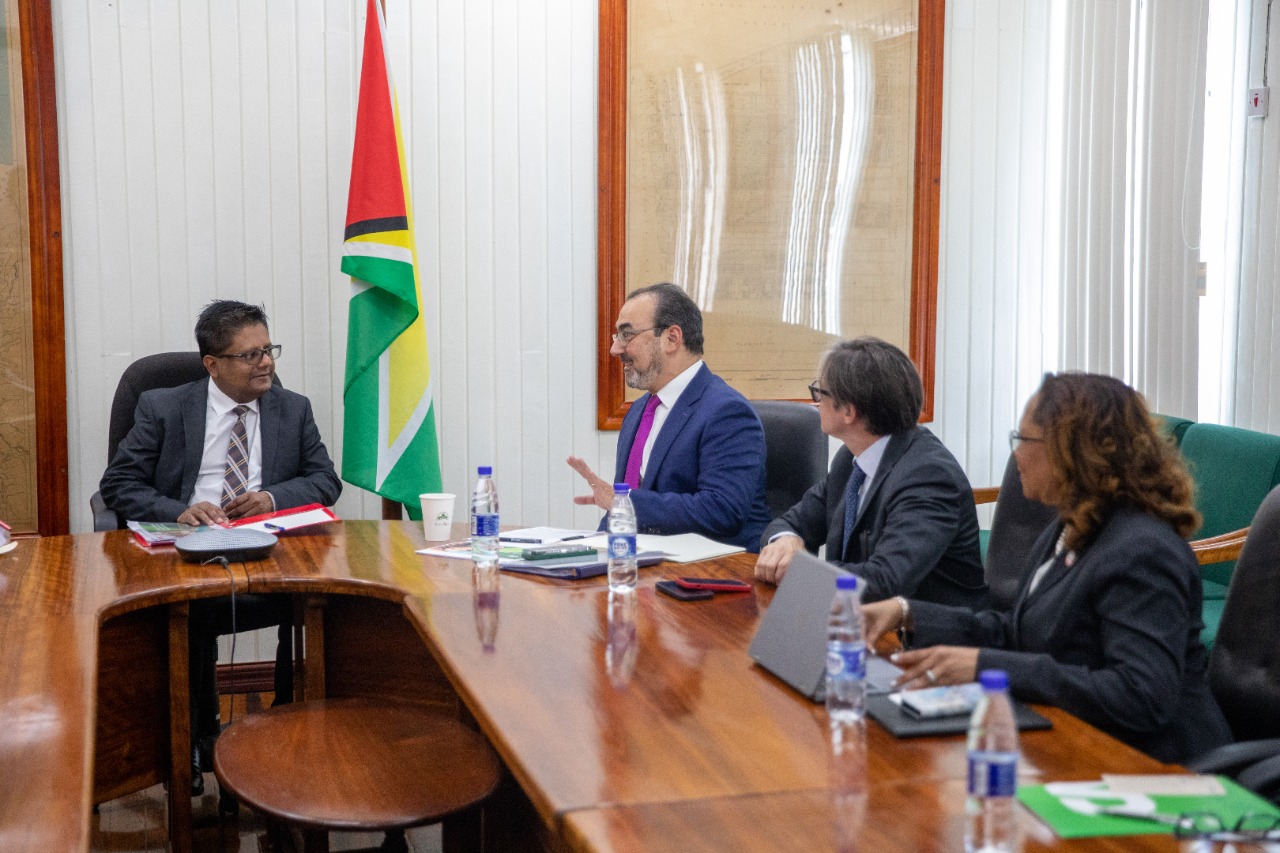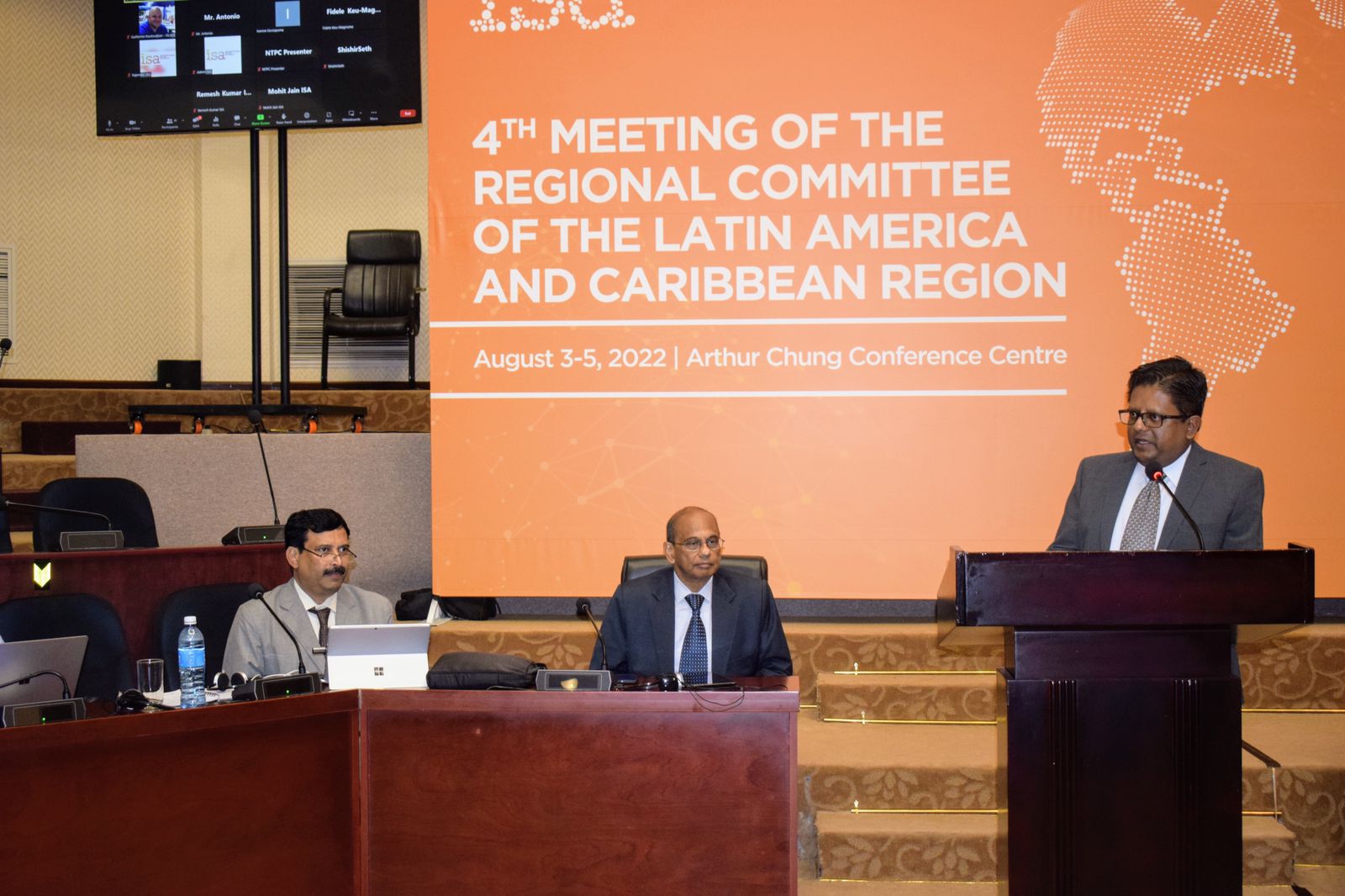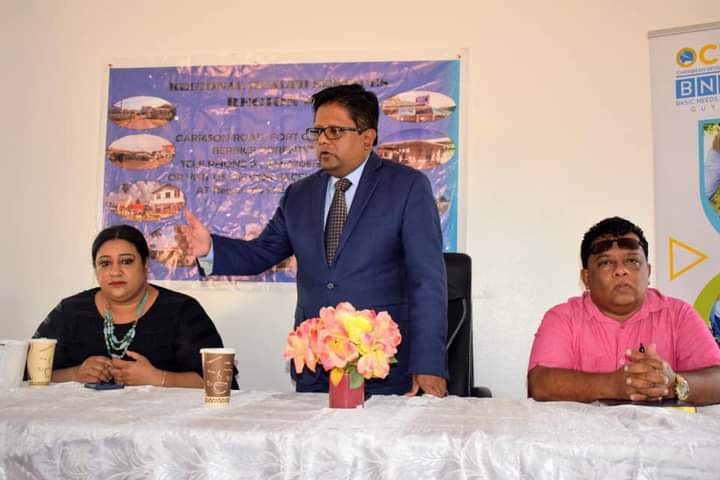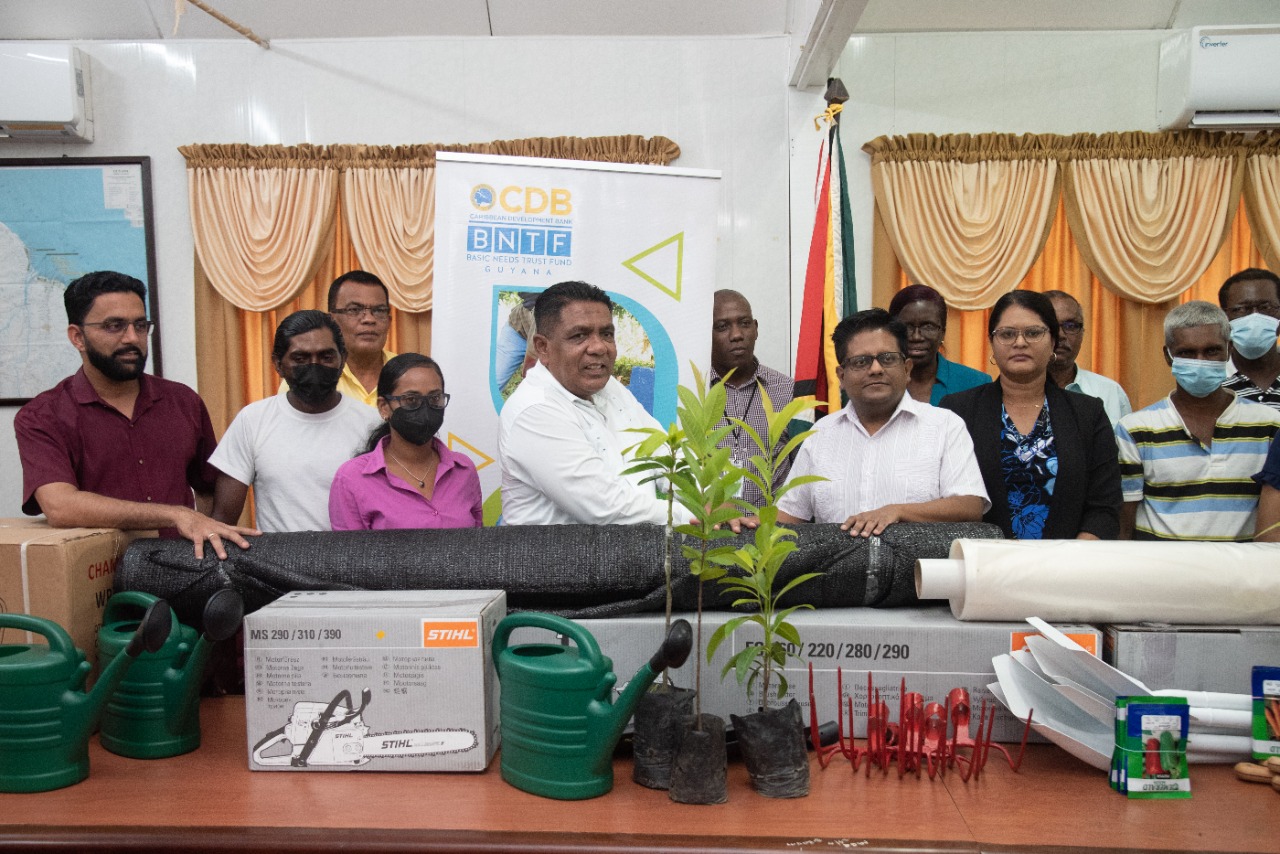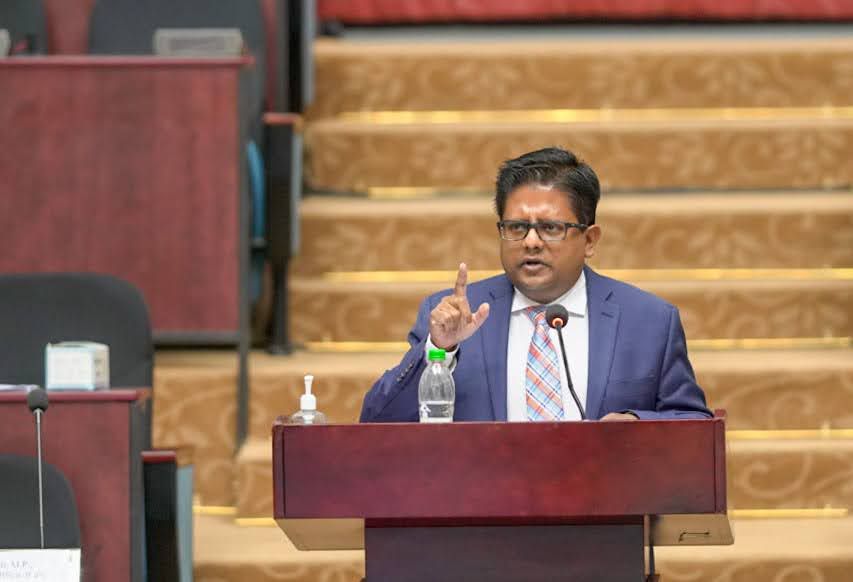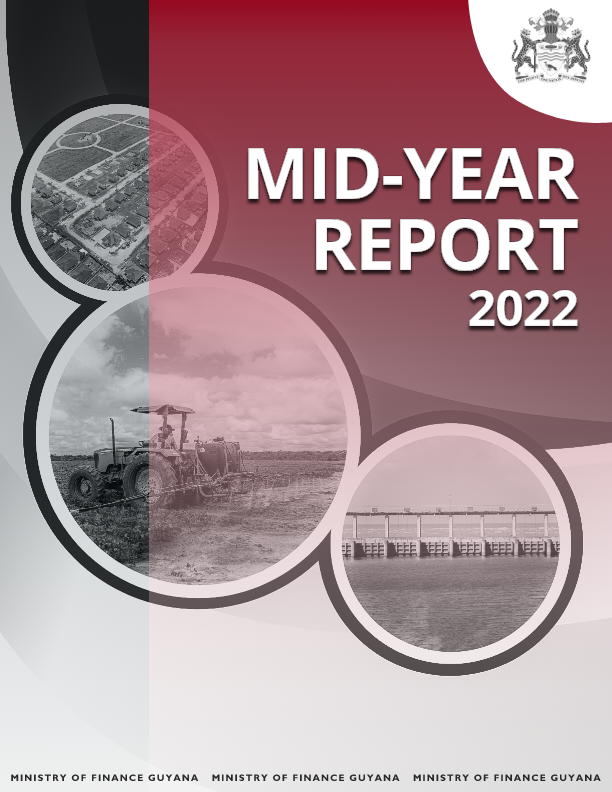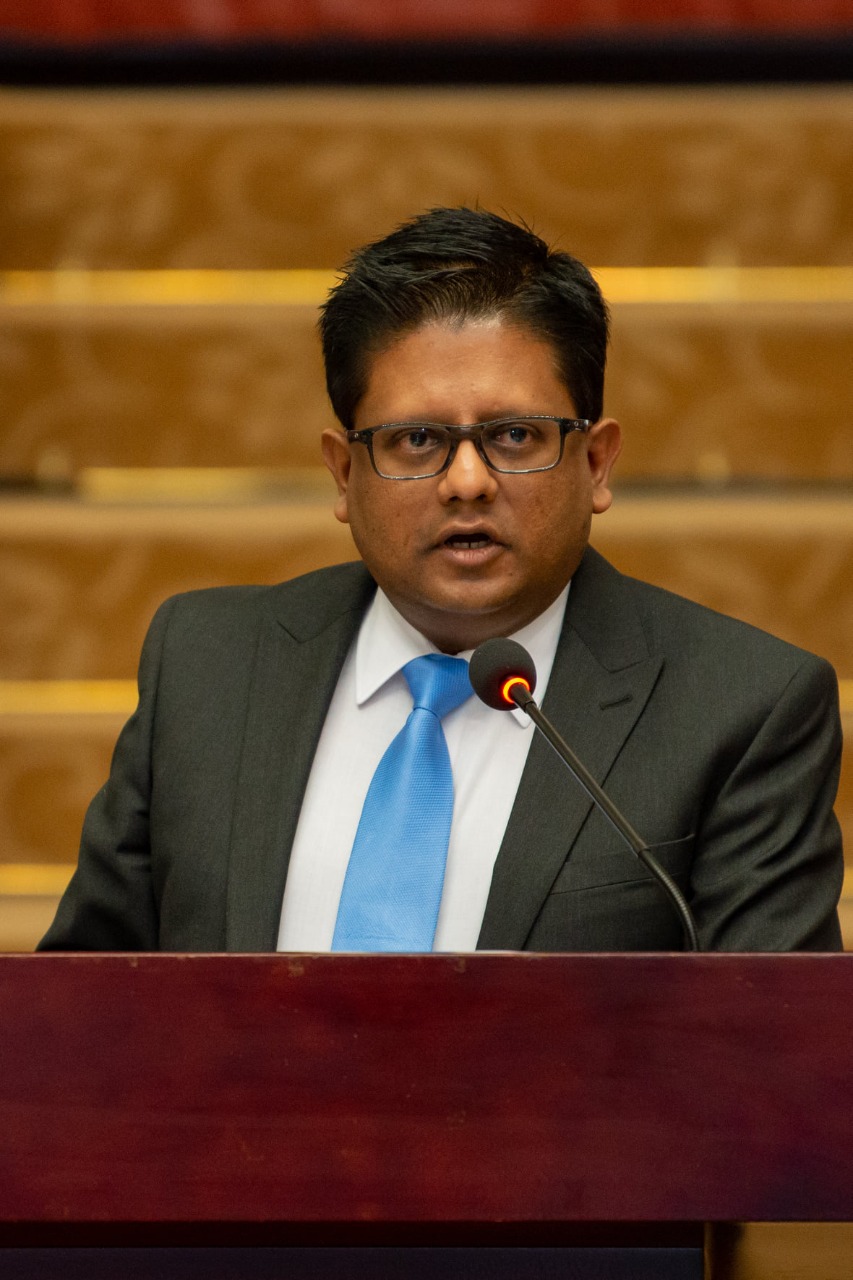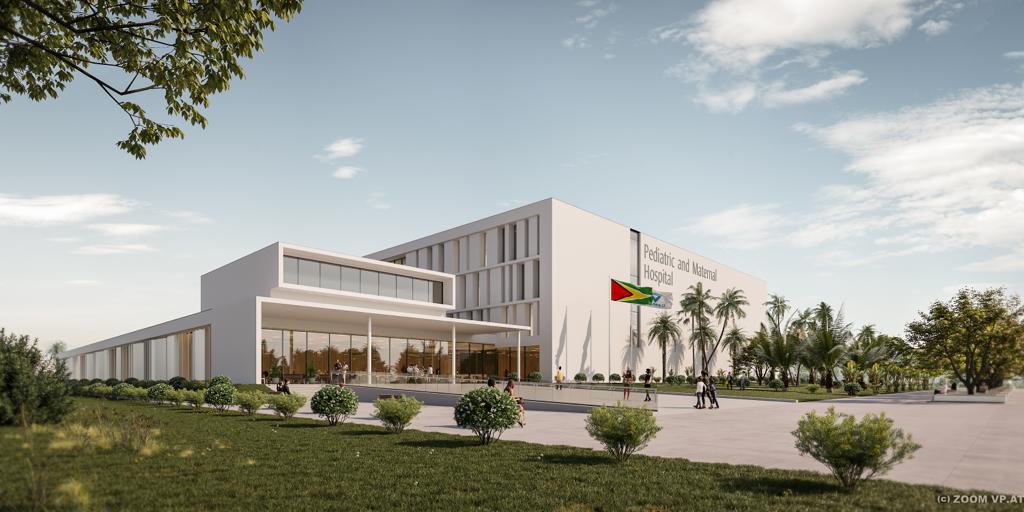-as Government continues to forge partnerships to catapult its development agenda
Georgetown, Ministry of Finance, November 14, 2022: Senior Finance Minister Dr. Ashni Singh today met with Executive President of the CAF (Corporacion Andina de Fomento) Development Bank of Latin America, Sergio Díaz-Granados and a team from the Bank, at the Ministry of Finance.
CAF is the development bank of Latin America and the Caribbean which promotes a sustainable development model and the integration of the Latin American and Caribbean (LAC) region through credit operations, non-reimbursable resources, and support in the technical and financial structuring of projects in the public and private sectors of Latin America.
During the meeting Minister Singh welcomed the Bank’s President to Guyana explaining that Government is open to partnerships with financial institutions such as CAF as it forges ahead on its development agenda. Discussions centered on how the financial institution can partner with Government to ensure its newly found oil and gas resources are steered toward boosting its economy and diversifying a number of critical sectors such as agriculture, tourism, social services and infrastructure. Government is also pushing its Low Carbon Development Strategy (LCDS), an area which the Bank expressed keen interest in pursuing.
Dr. Singh pointed out as well that the Bank's visit is a historic one and explained that Government would like to see the Bank play a role in Guyana in the exciting transformation underway in the country while the Bank’s President highlighted that the bank belongs to the Region and it would be a priority to increase its presence in the Caribbean and to assist its members in their development drives. He noted the Bank’s focus is on regional integration, stressing that CAF would like to increase its presence and expand operations across the Caribbean.
CAF was created in 1970. It comprises 21 countries, 17 of which are Latin American and the Caribbean. It also includes Spain and Portugal and 13 private banks in the region. CAF was originally established by five Andean member countries namely Bolivia, Colombia, Ecuador, Peru, and Venezuela. Its relationship with the Caribbean started in 1994 when Trinidad and Tobago (T&T) signed the agreement to become a Series “C” CAF following which Jamaica and the Dominican Republic became a Series “C” shareholder in 1999 and 2004, respectively.
